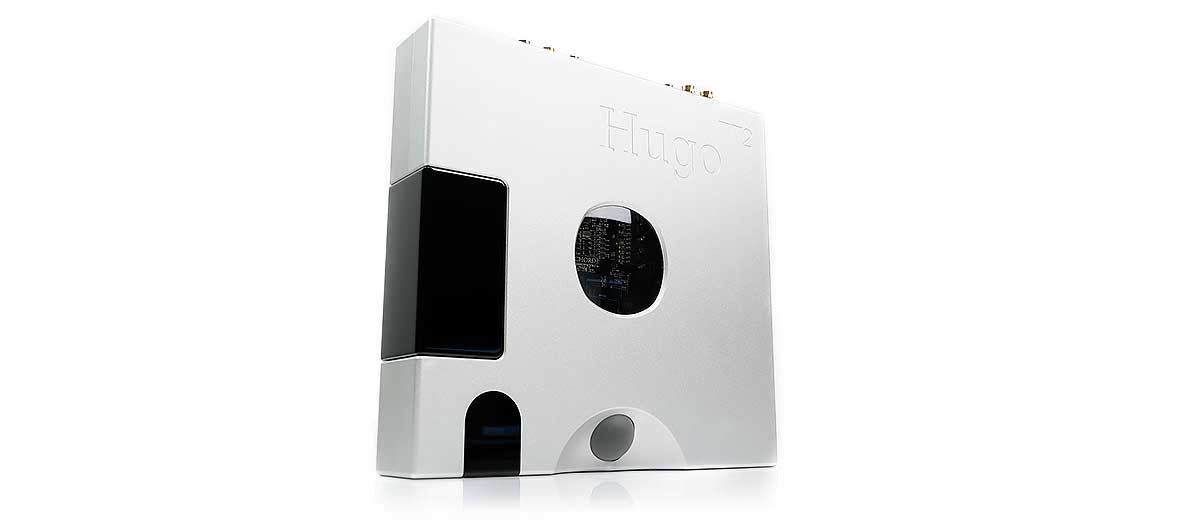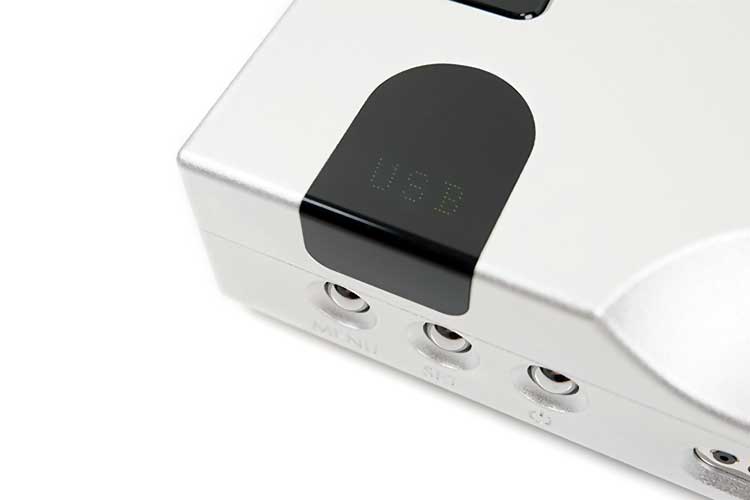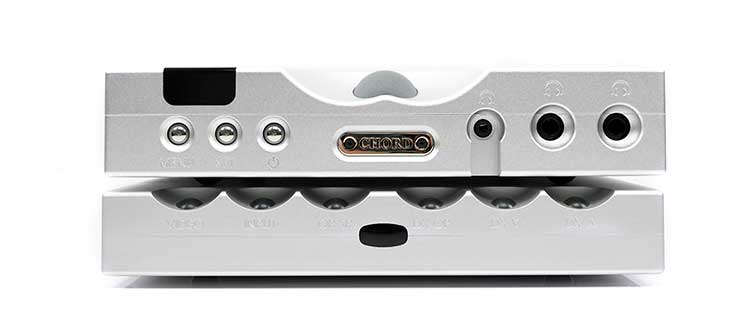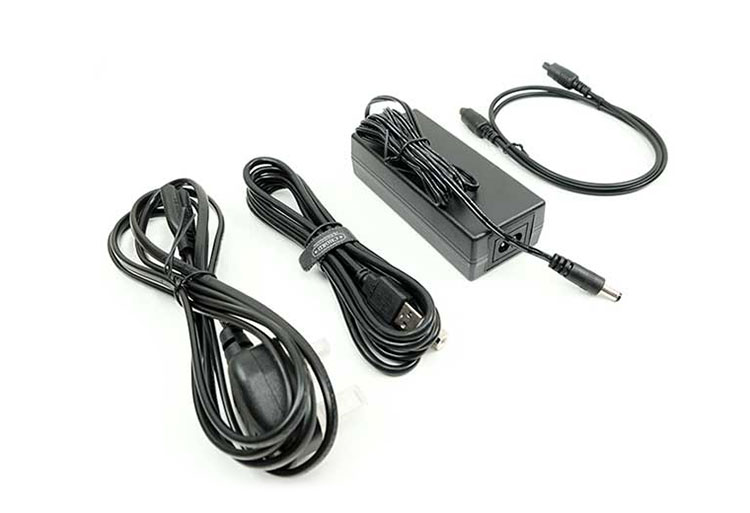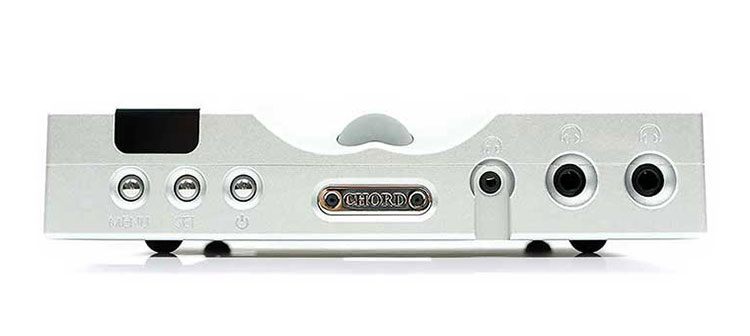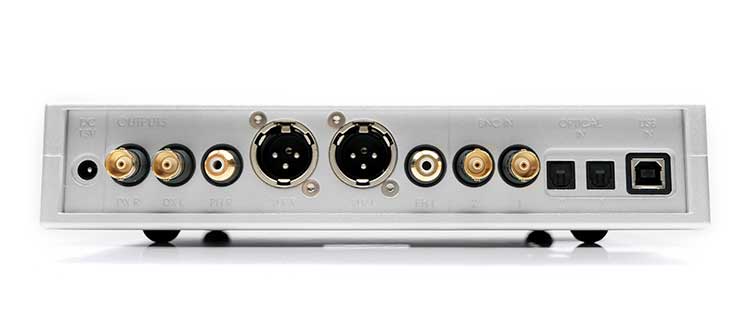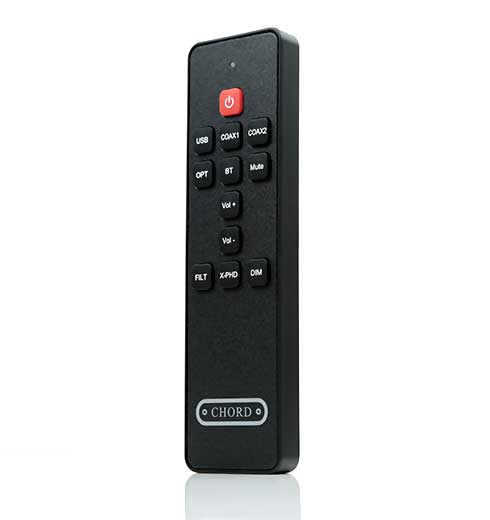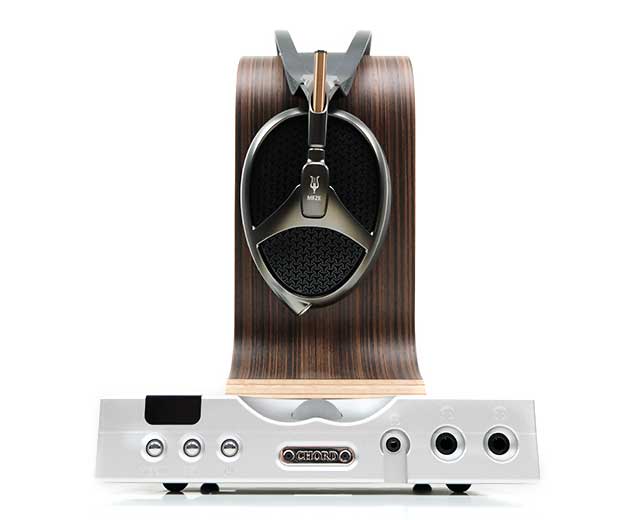The Chord Electronics Hugo TT2 is a gen 2 high-end DAC, preamp, and headphone amplifier. It has 5x the processing power of the original Hugo TT. The TT2 is priced at £3995.
Disclaimer: The Chord Electronics TT2 sent to us is a sample in exchange for our honest opinion. We thank the team at Chord Electronics for giving us this opportunity.
You can read more about Chord Electronics products we reviewed on Headfonics by clicking here.
Our full review is now out as of March 2021 and you can find it here.
Since reviewing the impressive Hugo M Scaler it has always been in the back of my mind just how good it would be paired with the TT2. After all, they do form part of an official stack with the TToby propping up the base in most of Chord Electronics’ photoshoots.
Reviewing the Qutest with the M Scaler kind of felt like a freshman’s surprise excursion with the prom queen. What more if we stuck in the potential quarterback? (Sorry Dave, you are the coach, maybe next time).
So yes, here we are a few months later unboxing the Chord Electronics Hugo TT2. This a DAC, a preamp, and a headphone amplifier desktop all in one. A super-charged Hugo 2 if you will and a sizeable upgrade on the original TT in 2015. The price is not for the faint of heart at £3995, but like the dCS Bartok, this could be potentially someone’s fabled ‘end game’.
Tech Inside
The TT2 is probably the most complex of the ‘trinity’ of devices that form the aforementioned ‘stack’. When I say complex its more to do with the use case than the advancement of any specific technology. Much of the technology inside the TT2 is an evolution or a precursor to that found in the likes of the Hugo 2 and the M Scaler.
With the TT2 you can use it as a pure DAC to feed other amps, a dedicated preamp to feed into power amps and to the front, a powerful headphone desktop amp solution. That does appeal to both HiFi speaker enthusiasts as well as headphone users and therefore it needs to excel in far more areas than either the TToby or the Hugo M Scaler.
Amplifier
It is really the TT2 DAC that gets all the media frenzy and with good reason. However, this time I wanted to start with the amplification technology because, for me, there is a lot here that makes this a quality design.
The output power of the amp here is very strong at 7.3W into an 8Ω RMS load in single-ended mode (headphones and preamp) or a huge 18w RMS (preamp only) into a similar load balanced.
Now, granted when you drop to 8Ω, (or possibly even 4), then you are walking into speaker territory. However, what is also impressive, and perhaps more pertinent to us, is the voltage control of the TT2 amplifier to account for higher impedance gear such as headphones.
Voltage Control
The TTS can globally control two Vrms voltage gain levels at a low and high gain setting and these apply not just to the headphone output but also to the preamp. For headphones on the low-end, it will deliver 3.3Vrms or around 340mW into a 32Ω load right up to 9.3Vrms or 2.7W into the same load on the high-end unbalanced.
There is no balanced output for this amp, not something Chord believes in principle with their amp designs. However, 2.7W into 32Ω is enough to drive most modern planar headphones with aplomb. Certainly, it is more powerful on paper than the dCS Bartok Class A amp and very close in performance to our current favorite analog desktop headphone amp, the Xi Audio Formula S.
For balanced via the XLR output, it goes even higher with 6.6Vrms or 1.3W into a 32Ω and a massive 18.6Vrms port well over 10W into the same load. Bear in mind these are weighted measurements so the parameters for the TT2 amp from being able to cope with demanding 2.1 systems are very clearly defined.
All of this is done with a consistent headphone output impedance at a satisfyingly low 0.042Ω which should not play havoc if you fancy sensitive gear.
DAC
A huge amount has already been covered in our reviews to date on what Rob Watt’s has achieved with his fantastic DAC designs since the original Hugo and Mojo reviews. However, it is worth pointing out why the M Scaler add-on can make a significant difference.
To start, the DAC design is a similar development from the Hugo to the original TT. This is an inhouse DAC and FPGA topology, only this time it builds on the Hugo 2 Xilinx Artix 7 FPGA processor instead of the older 45nm Spartan 6.
This allows a much more complex level of filtering with no less than 86x 208MHz cores running in parallel. This allows the TT2 DAC to deliver an advanced 16FS WTA 1 filter with a ceiling of 98,304 taps.
Now that is double the Hugo DAC potential which ‘taps out’ at 49,152 and it also uses the same Artix 7 FPGA. The difference here is really the core count with the TT2 having a vastly expanded amount of filtering capability.
Now also might be a good time to point out that traditional delta-Sigma blocks are still working the traditional 256-tap filter design.
M Scaler Difference
So how can the M Scaler make a difference? Well, if 86 x 208MHz cores with 98,304 taps on that Xilinx Artix 7 FPGA how about using a Xilinx XC7A200T FPGA with 740 DSP cores to M Scaler to bypass the initial stage or WTA 1 to get 1M taps, (BNC).
Not only that but also give you the ability to pick your sample rate right up to PCM 768kHz, even for 16BIT 44.1k tracks. It made a huge difference to the quality of the Qutest output, no reason to think it won’t be the icing on the cake for the TT2 performance.
Decoding
All of that prowess is not without a super-high decoding potential either. If you are coming from the Hugo 2 you will find that it is quite similar with a max of DSD512 and PCM 768kHz. That is futureproofing and then some. Just for reference, the original TT only had half that potential at 32BIT/384kHz and DSD128 maximum.
Still, no MQA but I do not think you will ever see that option on a Chord Electronics DAC given Rob’s misgivings on how MQA performs.
Power
So why not just enhance the Hugo 2’s capability rather than make something entirely new? Well, physics is a bugger at times, especially when it comes to size and in the case of the Hugo 2, power.
Quite apart from the massively enhance I/O, the primary power plant of the TT2 has changed from a battery to 6 supercapacitors which are a hell of a lot bigger. Given the voltage requirements, especially in high gain, this should things very tight when the load or current is at its highest.
The TT2 also uses a discreet output stage between the DAC and filter and before the amplifier to keep an effective lid on distortion. Something critically important once you start tugging on high gain voltage numbers either via the preamp of demanding headphones.
Unboxing & Accessories
Function over form and definitely nothing fancy here for packaging. This is more of a Hi-Fi approach to packaging than head-fi with a strong but decidedly brown box enclosure. Inside, there is plenty of foam laddering to keep the TT2 in place and the unit itself vacuum-sealed in plastics tightly.
Accessories are packaged into two narrow brown boxes either side of the main unit’s foam enclosure and a single-sheet start-up manual to the base of the box.
What is included surprised me a little for this price point. Aside from the power cable (UK plug), you get one USB Type-B to type A cable and a 1m optical cable. That’s purely digital and similar to the Hugo 2 package without the OTG connectors. I would have liked to have seen one set of dual-RCA cables or even better, a set of XLR cables also included to let you get started.
Granted, if you are a headphone user you do not need anything more. However, the Hugo TT2 should not be about the bare minimum to get going. Also, TToby owners might have enjoyed the analog connectors, especially if going down the preamp route.
Design
If Rob’s stamp is on the inside then John Frank’s tastes are on the outside. The Hugo TT2 is unmistakably a Chord Electronics form factor and design. Those coming from the original Hugo TT will take heart from the fact it is not a complete redesign. This is more of a refined evolution in keeping with how the Hugo developed into the Hugo 2.
What does that mean? Well, it still has that low-profile square-like shape and built like an absolute tank with that precision-machined 2-piece aluminum casing. Like the progression from the Hugo to the Hugo 2, the TT2 design now has a bit more of those deep cut contours and a superior positioning of the volume control orb.
Gone is the hued out digital display concave to the fore and in comes a streamlined right-angled smoked acrylic display panel. The smoked digital display is matched by a similar-looking acrylic screen to the middle of the left panel. This is to allow for an optimal BT signal to pass through the dense aluminum housing.
On the top is a typical Chord Electronics circular panel which allows you to peer into the circuitry as well as to emit varying colors to signify changing samples rates.
To the front, the buttons look more intuitive than the original TT and even the Hugo 2. Gone is the X-PHID button and IP button and instead we have a menu and set button. These are linked to the LED interface above which makes a bit more sense. To the right, we have a 3.5mm and two 6.35mm unbalanced headphones (and monitor) outputs.
Rear
Despite the TT2’s somewhat compact size everything seems quite well spaced out. Granted, there are not a plethora of connections quite as you will find at the back of the Bartok but everything you need to preamp is there. There is also a set of dual BNC to couple with the Hugo M Scaler or use individually.
I did note that Chord Electronics has very kindly aligned the dual BNC just above, (or below depending on how you stack), where the M Scalers dual BNC is also positioned. That makes things a bit tidy for cabling.
Aside from the dual BNC, you have dual optical in, USB in, single-ended and balanced XLR out. The final two connectors to the far left are right and left DX BNC outputs.
It is worth noting that the USB on the TT2, like the Qutest, are galvanically isolated. This means the power rails of the data USB inputs have been isolated to prevent interference from stray current.
Controls
The controls for the TT2 are split into the three user scenarios, headphones use, DAC, and preamp use. In turn, you can control which setup you prefer via the manual buttons on the TT2 or opt for their remote control.
This remote control is identical to the Hugo M-Scaler remote control but coded to work only with their respective devices. You will not find one controller messing around with another component if stacked.
Wireless
You can also elect to move to the wireless mode of the TT2 via the remote control or interface and here you will be able to receive up to aptX level. Sadly, there’s no aptX-HD or LDAC capability to transmit or receive via the TT2.
Volume
Volume, as you would expect is via the big orb at the front. Much like the Hugo 2, it works its way through a range of colors to signify what level you are at. The dial is quite steady so it will not fly off the rails and give you a nasty surprise.
On a very crude level, the volume range runs in 1db increments from red at the lowest volume level to shades white at the top. White is designated also for the line out.
Filters
The TT2 also uses the new filter system that first saw the light of day on the Hugo 2 and the Qutest. I love the Chord filters system, period. I use it on the Qutest and the Hugo and most of the time I end up with the warm filter due to personal preferences. When I switch to the ‘Incisive Neutral’ filter from time to time it is really only for tube amps. Your mileage may vary on that one.
I am presuming it softens up on the distortion level a little to create that additional warmth and then tightens it right down for the two natural alternatives. By alternatives, I mean the warm and neutral options using a bit of high-frequency roll-off, (filters 2 and 4).
They are primarily intended to attenuate any creeping noise from hi-res samples above 88.2k. It is a similar system being used in the Hugo M Scaler so I will be keen to see how they differ in their application in the main review.
Initial Sound Impressions
(Initial impressions are done with and without the Hugo M Scaler attached via dual-BNC and standard USB input. The headphones used were the Hifiman Susvara and Meze’s Empyrean. Monitors tested included the Vision Ears Elysium and the Empire Ears Phantom).
What is interesting to note is the slight difference I am initially hearing compared to the Qutest pure DAC. Not sure yet if that is the DAC or headphone amp but the TT2 sounds very natural and linear in comparison to the Qutest’s slightly brighter or livelier signature. It also sounds a little “juicier’ than the Hugo 2’s signature if that makes sense.
Headphones
Out of the box, there is no question the Hugo TT2 can handle even my most demanding headphones and I include the Hifiman Susvara in that group.
It does sound quite different through to something like the dCS Bartok. This is a more neutral, cleaner and very fast sounding presentation. The detail retrieval and instrumental separation with this pairing is first class. Not once did I feel that the dynamic range was lacking, even with slightly lower-res 44.1k 16BIT recordings.
I do find myself gravitating initially to filter 2, warm, to inject a little bit more warmth into the Susvara. I love how quick the Susvara sounds with any decent amp but keeping it on the sweet side of neutral is always my preferred signature. Filter 2 does the trick there.
Absolutely bundles of headroom with the Empyrean attached to the Hugo TT2. I switched back to the Incisive Neutral filter with this pairing for my initial testing sessions. I tend to like the Empyrean attached to a clean amp and source with the leather pads.
This pairing seems to benefit from the cleaner instrumental timbre and tight sound the Hugo TT2 delivers. There is some wonderful clarity here which is something I think is an absolute must for the Empyrean to sound optimal. The Empyrean top-end is slightly roll-off compared to the Susvara so anything dense or warmed-up can often sound ‘samey’ or boring.
Monitors
First, you really need to switch from high gain to low gain to get any the Hugo TT2 set of monitor usage. However, once done the performance from the initial 2 monitors was superb, particularly the Elysium.
I hesitate a little on the Phantom, not because it sounded bad, but rather I think it was on the fence in terms of noise floors. I did not detect any hiss on either of the two IEMs, the Hugo TT2 is very clean in that regard. Rather, just =1dB from mute (just below -81dB), I could hear the music roll on the Phantom. I dare say it might be too much for really sensitive monitors like the Solaris SE.
For more demanding monitors like the e-stats fused hybrid Elysium, the Hugo TT2 pairing is supremely quiet with plenty of control in low-gain. It also sounded very precise and fast with an impressively holographic soundstage.
Hugo M Scaler
I will not go too much into sound impressions because that best left to the main review. I always find that Chord DACs and amps have a long gestation period before you can fully get to grips on how they are coloring your favorite headphones.
Especially so with the Hugo M Scaler attached and there is a definite difference in how the TT2 sounds with and without the upsampling dimension. How best to describe it in a few short easy introductory words?
To use a metaphor inappropriately, it steadies the ship somewhat. The upsampling to 768kHz brings even more linearity to the low-end and opens up the mids, especially the perception of micro-detail in instrumental note texture.
It loses a little bit of aggression from the Hugo TT2 DAC in favor of some outstanding control and holographic complexity. Moving to the passthrough red setting on the Hugo M Scaler pulls everything in a bit closer so it sounds shade denser but more 2-dimensional.
Stay Tuned!
There is a lot more ground to cover on the Hugo TT2, not least how it pairs with the TToby. I have the TToby hooked up to the Hifiman headphone amp adapter for use with the HE6 and I will try to cover that also.
I love how the HE6 and the Abyss Diana Phi sound with that huge power amp behind them both. The XLR balanced output of the Hugo TT2 might be a bit too much for these two so I need to be a bit cautious about the power obsession angle. Going unbalanced has already shown promising performance with the Susvara so there may not be a need for the additional power.
The Bluetooth angle is also worth looking into as we have a ton of wireless devices lying around this year including some good streamers. And of course, we need to compare, not just the DAC but also the headphone amp. We do have some worth competitors this year including the dCS Bartok so stay tuned for our full review down the line!
Chord Electronics Hugo TT2 Specifications
- Tap length filter: 98,304-tap 16FS WTA 1 – 10 element design
- Connectivity (input): 1x USB Type-B, 2x Coax BNC, 2x Optical & Bluetooth
- Connectivity (output): Stereo XLR, Stereo RCA, 2x 6.5mm Headphone jack & 1x 3.5mm Headphone jack
- Digital output connectivity: 2x DX BNC (expansion outputs)
- Weight: 2.53kg
- PCM support: 44.1kHz, 48kHz, 88.2kHz, 96kHz, 176.4kHz, 192kHz, 358.8kHz, 384kHz, 705.6 and 768kHz – 16 to 32bit
- DSD support: DoP DSD 64 to DSD 512 – native via Windows
- Volume control: Digital
- Line-level mode: Activated within the menu
- Driver support: Driverless with Mac OS X and Linux, driver required for Windows OS
- Dynamic range: 127dB ‘A’ weighted
- Noise: 4 uV ‘A’ weighted (high gain), 1.7 uV ‘A’ weighted (low gain) with no measurable noise floor modulation
- Distortion: 0.00008% @ 2.5 V 300Ω; 0.00016% @ 6 W 8Ω
- Output power (unbalanced): (@1% THD) 288 mW RMS 300Ω; 7.3 W RMS 8Ω
- Balanced: (@1% THD) 1.15 W RMS 300Ω; 18W RMS 8Ω
- Output impedance: 0.042Ω
- Stereo separation: 9 V RMS 300Ω -138dB
- Dimensions: 5.2cm (H) 23.5cm (W) 23.8cm (D)

